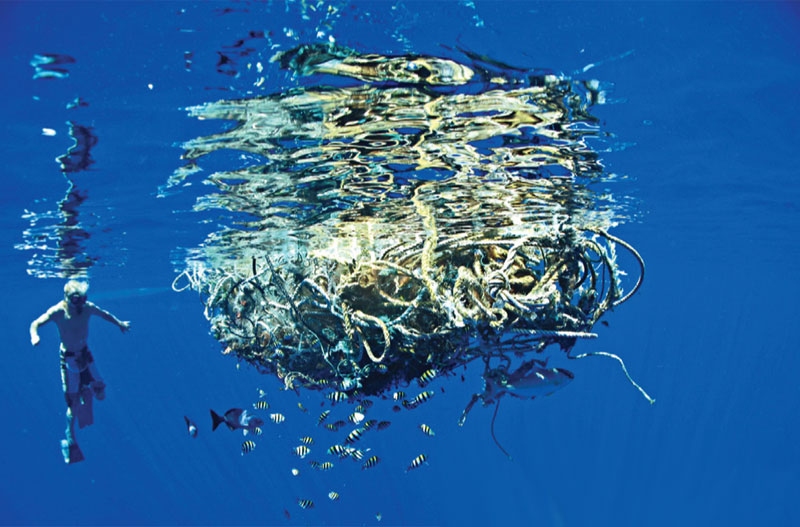A significant amount of the world’s plastic ends up in our oceans, which has caused something of a mystery for ecologists, who until recently had found evidence of only tens of thousands of tons of that garbage rather than the millions they expected would be floating on the surface. Now a joint-team of researchers has found evidence that plastic particles have been accumulating in deep sea sediment for the past century. But some questions remain–namely the how of the problem. Lead researcher Dr Lucy Woodall points to various methods by which the plastic is making its way to the bottom–methods which reflect the specific nature of the waters in which garbage is discarded.
The team–composed of researchers from the Natural History Museum of London, the Scottish Marine Institute, and the universities of Barcelona, Oxford, and Plymouth– looked at samples of from 12 sites over three bodies of water: the Atlantic, the Indian, and Mediterranean. The samples were collected between 2001 and 2012 at depths of 300-3,000 meters, and contained high levels of plastic garbage particles–called “microplastics” for their size of less than 1mm.
While the surface of the ocean is “mysteriously” clean of garbage–only around 35,000 of the millions of tons of plastic garbage currently in our oceans are expected to still be at the surface–the deposits in the ocean’s sediment were mixed with 1,000 times that amount of plastic.
The finding by the joint team marks an important step in understanding how plastics make their way through ocean ecosystems. The mystery remains, however, as to how the plastics make their way from the surface to the sediment.

Lead researcher on the study, Dr Lucy Woodall of the Department of Life Sciences at the Natural History Museum in London, told The Speaker that the team also has a pretty good idea of the various processes by which the plastic makes its way to the bottom
“We speculate that similar oceanographic mechanisms as act on plastic fibers act on other particles, such as dense shelf cascading, severe coastal storms, offshore convection and saline subduction,” Woodall told us. “We suggest additionally that ‘Colonization by organisms, adherence to phytoplankton and the aggregation with organic debris and small particles in the form of marine snow will eventually enhance settling.’
“Specific topography of the deep sea will also carry with it specific processes, for example submarine canyons are known to act as conduits to deep areas, and taylor columns–specific currents–over seamounts could result in retention of plastics at these sites.”
Although the total garbage accumulated in the earth’s oceans are calculated at hundreds of thousands to millions of tons, this is only a fraction of the total plastic produced and discarded. A recent study found that the amount of garbage in the ocean is only around 0.1 percent of the amount we produce each year.
“Further studies specifically addressing the process of plastics moving to depth are required so that we can begin to understand the impact of these pollutants in the environment,” said Woodall.
The report, “The deep sea is a major sink for microplastic debris,” was completed by Lucy C. Woodall, Anna Sanchez-Vidal, Miquel Canals, Gordon L.J. Paterson, Rachel Coppock, Victoria Sleight, Antonio Calafat, Alex D. Rogers, Bhavani E. Narayanaswamy, and Richard C. Thompson, and was published in the journal Royal Society Open Science this week.
By James Haleavy
